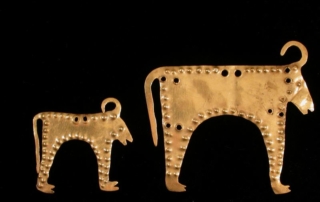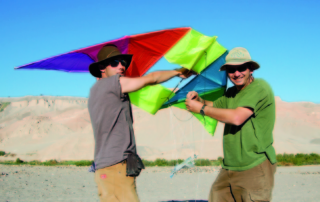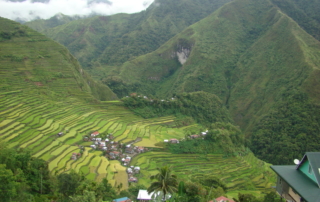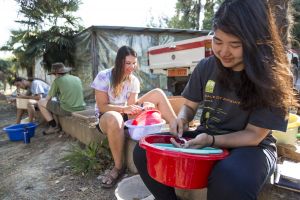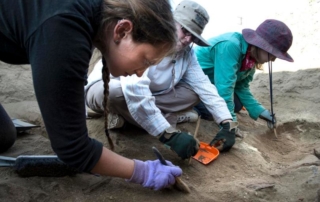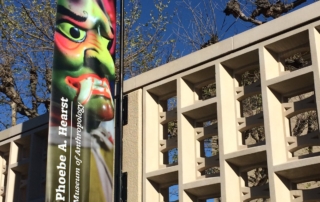Smithsonian Magazine: Mystery of the Varna Gold: What Caused These Ancient Societies to Disappear?
"Treasure found in prehistoric graves in Bulgaria is the first evidence of social hierarchy, but no one knows what caused the civilization’s decline." By Andrew Curry SMITHSONIAN JOURNEYS QUARTERLY APRIL 18, 2016
Backdirt: Out of the Classroom and into the Field
"Out of the Classroom and into the Field: Ran Boytner and the Field School Revolution" Founder and Executive Director of the IFR, Dr. Ran Boytner, was interviewed for UCLA Cotsen Institute Archaeology Annual Review: Backdirt, by former IFR field school participant and UCLA graduate, Ben Nigra. Boytner explains how he found archaeology, the backstory that led him to start the IFR, and the value of field work.
Backdirt: The Ifugao Archaeological Project
The Ifugao Rice Terraces are UNESCO World Heritage monuments that attest to the ingenuity and communitarian management of Cordilleran people of Luzon in the Philippines. Once thought to be over 2,000 years old, archaeological excavations have demonstrated that the upland rice field systems in the region were responses to the social and political pressure from intrusive Spanish colonization into the region starting at c. AD 1600. To determine the impacts of Spanish colonialism on Philippine highland populations, the 2016 field season of the Ifugao Archaeological Project (IAP) focused on the Old Kiyyangan Village, an abandoned settlement in the town of Kiangan, Ifugao. The IAP’s primary research goals were: 1) to document highland political and economic responses to colonialism by looking [...]
Daily Bruin: UC students and professors participate in summer excavation in Greece
Human activity in Pieria ranges from the Late Neolithic (3,500 BCE) through Hellenistic (330-150 BCE) periods. The Ancient Methone Archaeological Project explored the dynamics of landscape and landscape change, with a focus on sea level changes and related shoreline shifts. Integrated geophysical and geomorphological investigations aimed to reconstruct the palaeoshoreline that defines the location and extent of the port of ancient Methone. This was crucial information that helped guide and focus plans for the broader study of the Haliakmon Delta – a unique environment linking riverine and coastline transport/communication routes to regional models of landscape evolution. Field school students were involved in examining the relationship between the site’s ancient history and industries to its strategic location and port, its unique natural [...]
Orange Country Register: Who is buried in the potter’s field?
For nearly 100 years (1908-2008), unidentified remains in San Bernardino County California have been buried in a three acre plot of land located in one of the county’s many cemeteries. Many of these individuals were the victims of foul play, others were simply forgotten by society, but all have one thing in common: forensic science was unable to identify who they were using the methods available at the time. In 2001, the California Senate passed Bill 297, which asked counties such as San Bernardino to apply buy xanax in usa modern DNA analysis to these decades-old cold cases. In 2015 IFR ran a field school to conduct forensic work to assist in such identification. Students excavated burials in forensic [...]
The Salem News: After 30 years, DNA solves mystery of missing woman
For nearly 100 years (1908-2008), unidentified remains in San Bernardino County California have been buried in a three acre plot of land located in one of the county’s many cemeteries. Many of these individuals were the victims of foul play, others were simply forgotten by society, but all have one thing in common: forensic science was unable to identify who they were using the methods available at the time. In 2001, the California Senate passed Bill 297, which asked counties such as San Bernardino to apply modern DNA analysis to these buy adderall from canada decades-old cold cases. In 2015 IFR ran a field school to conduct forensic work to assist in such identification. Students excavated burials in forensic contexts, [...]
Plus One: Sea-level rise and archaeological site destruction: An example from the southeastern United States using DINAA
IFR field directors Eric and Sarah Kansa are working on understanding archaeology Databases through a grant from NEH. The IFR cares deeply about archaeological databases and the preservation of cultural heritage, http://journals.plos.org/plosone/article?id=10.1371/journal.pone.0188142
Arab News: Reconstruction of Aleppo’s Old City faces cultural, logistical challenges
IFR Board Chair Emeritus Tim Williams, a world-renowned expert on reconstruction of war torn cities, was recently interviewed by Arab News about Aleppo. http://www.arabnews.com/node/1203801/middle-east
KPCC: LA Metro construction unearths mammoth fossils
IFR Board Member and La Brea Tar Pits Field School Director Emily Lindsey comments on subway construction and Mammoths in LA, a discovery right in our own backyard... https://www.scpr.org/news/2017/12/11/78776/la-metro-construction-unearths-mammoth-fossils/
Hearst Museum of Anthropology: Hearst Museum Announces New Institute for Field Research Student Program
The IFR is partnered with the Phoebe A. Hearst Museum of Anthropology at UC Berkeley to offer a four-week program that explores all aspects of museum work. Read article here.


